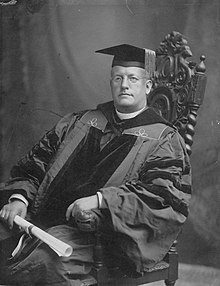
Samuel Cahill was an American Roman Catholic Jesuit priest and academic. He served as President of the College of the Holy Cross from 1887 to 1889.
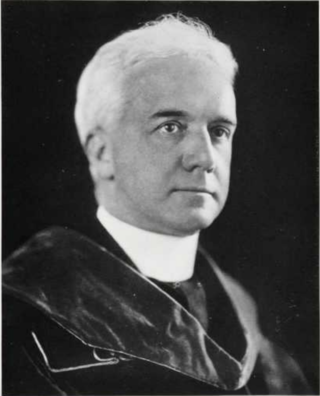
William Coleman Nevils was an American Catholic priest and Jesuit educator who became the head of numerous Jesuit institutions throughout the northeastern United States, including Georgetown University and the University of Scranton. Born in Philadelphia, he was educated at Saint Joseph's College, before entering the Society of Jesus. While studying for the priesthood, he taught at Boston College and the Loyola School. After receiving his doctorate from Woodstock College, he held professorships at St. Andrew-on-Hudson and the College of the Holy Cross, before transferring to Georgetown University, where he became the dean of Georgetown College, the academic vice president, and the regent of the School of Foreign Service. He then left Georgetown to become the dean of the Shadowbrook Jesuit House of Studies.
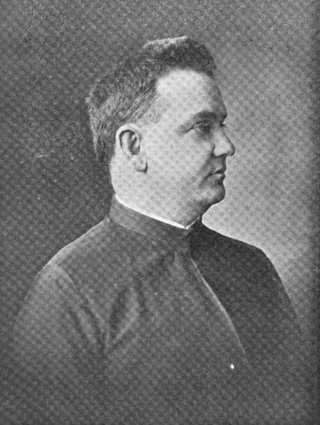
William George Read Mullan, SJ, was an American Jesuit and academic who served as President of Boston College from 1898 to 1903 and President of Loyola University Maryland from 1907 to 1908.

Bernard A. Maguire was an Irish-American Catholic priest and Jesuit who served twice as the president of Georgetown University. Born in Ireland, he emigrated to the United States at the age of six, and his family settled in Maryland. Maguire attended Saint John's College in Frederick, Maryland, and then entered the Society of Jesus in 1837. He continued his studies at Georgetown University, where he also taught and was prefect, until his ordination to the priesthood in 1851.

Thomas F. Mulledy was an American Catholic priest and Jesuit who became the president of Georgetown College, a founder of the College of the Holy Cross, and a Jesuit provincial superior. His brother, Samuel Mulledy, also became a Jesuit and president of Georgetown.

Charles William Lyons was an American Catholic priest who became the only Jesuit and likely the only educator in the United States to have served as the president of four colleges. Born in Boston, Massachusetts, he attended the local public schools before entering the wool industry. He abandoned his career in industry to enter the Society of Jesus. While a novice in Maryland, he suffered a nervous breakdown and was sent to Georgetown University as prefect. He then resumed his studies at Woodstock College, teaching intermittently at Gonzaga College in Washington, D.C. and Loyola College in Baltimore. After his ordination, he became a professor at St. Francis Xavier College in New York City and at Boston College.
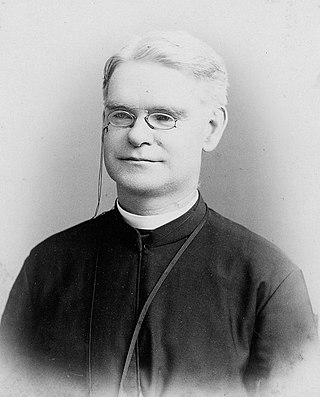
James Aloysius Doonan was an American Catholic priest and Jesuit, who was the president of Georgetown University from 1882 to 1888. During that time he oversaw the naming of Gaston Hall and the construction of a new building for the School of Medicine. Doonan also acquired two historic cannons that were placed in front of Healy Hall. His presidency was financially successful, with a reduction in the university's burdensome debt that had accrued during the construction of Healy Hall.
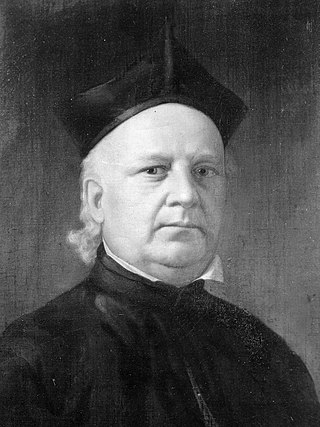
James A. Ryder was an American Catholic priest and Jesuit who became the president of several Jesuit universities in the United States. Born in Ireland, he immigrated with his widowed mother to the United States as a child, to settle in Georgetown, in the District of Columbia. He enrolled at Georgetown College and then entered the Society of Jesus. Studying in Maryland and Rome, Ryder proved to be a talented student of theology and was made a professor. He returned to Georgetown College in 1829, where he was appointed to senior positions and founded the Philodemic Society, becoming its first president.

Joseph Havens Richards was an American Catholic priest and Jesuit who became a prominent president of Georgetown University, where he instituted major reforms and significantly enhanced the quality and stature of the university. Richards was born to a prominent Ohio family; his father was an Episcopal priest who controversially converted to Catholicism and had the infant Richards secretly baptized as a Catholic.
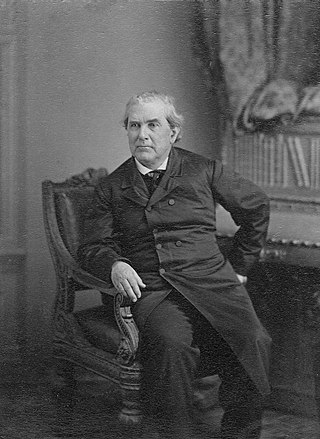
Charles Henry Stonestreet was an American Catholic priest and Jesuit who served in prominent religious and academic positions, including as provincial superior of the Jesuit Maryland Province and president of Georgetown University. He was born in Maryland and attended Georgetown University, where he co-founded the Philodemic Society. After entering the Society of Jesus and becoming a professor at Georgetown, he led St. John's Literary Institution and St. John the Evangelist Church in Frederick, Maryland. He was appointed president of Georgetown University in 1851, holding the office for two years, during which time he oversaw expansion of the university's library. The First Plenary Council of Baltimore was held at Georgetown during his tenure.
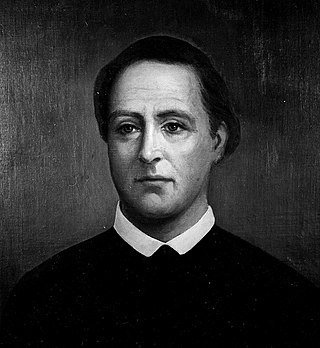
William McSherry was an American Catholic priest and Jesuit who became the president of Georgetown College and a Jesuit provincial superior. The son of Irish immigrants, McSherry was educated at Georgetown College, where he entered the Society of Jesus. As one of the first Americans to complete the traditional Jesuit course of training, he was sent to Rome to be educated for the priesthood. There, he made several discoveries of significant, forgotten holdings in the Jesuit archives, which improved historians' knowledge of the early European settling of Maryland and of the language of Indian tribes there.

Samuel A. Mulledy was an American Catholic priest and Jesuit who served as president of Georgetown College in 1845. Born in Virginia, he was the brother of Thomas F. Mulledy, who was a prominent 19th-century Jesuit in the United States and a president of Georgetown. As a student at Georgetown, Samuel was one of the founding members of the Philodemic Society, and proved to be a distinguished student, which resulted in his being sent to Rome to complete his higher education and be ordained to the priesthood. Upon his return to the United States, he became the master of novices at the Jesuit novitiate in Maryland, before being named president of Georgetown. He sought to be relieved of the position after only a few months, and returned to teaching and ministry.

William Feiner was a German Catholic priest and Jesuit who became a missionary to the United States and eventually the president of Georgetown College, now known as Georgetown University.
Enoch Fenwick was an American Catholic priest and Jesuit who ministered throughout Maryland and became the twelfth president of Georgetown College. Descending from one of the original Catholic settlers of the Province of Maryland, he studied at Georgetown College in what is now Washington, D.C. Like his brother and future bishop, Benedict Joseph Fenwick, he entered the priesthood, studying at St. Mary's Seminary before entering the Society of Jesus, which was suppressed at the time. He was made rector of St. Peter's Pro-Cathedral in Baltimore by Archbishop John Carroll, and remained in the position for ten years. Near the end of his pastorate, he was also made vicar general of the Archdiocese of Baltimore, which involved traveling to say Mass in remote parishes throughout rural Maryland.

Jerome Daugherty was an American Catholic priest and Jesuit who served in many different capacities at Jesuit institutions throughout the northeast United States, eventually becoming president of Georgetown University in 1901. Born in Baltimore, he was educated at Loyola College in Maryland, before entering the Society of Jesus and becoming a member of the first class at Woodstock College. He then taught various subjects, including mathematics, Latin, Ancient Greek, rhetoric, and the humanities in Massachusetts, New York City, and Washington, D.C., and served as minister at many of the institutions there.
Francis Xavier Brady was an American Catholic priest and Jesuit. Born near Gettysburg, Pennsylvania, he studied at Woodstock College, and held positions in various Jesuit institutions before becoming President of Loyola College in Maryland in 1908. He held the office until his death in 1911.
Joseph O'Callaghan was an American Catholic priest and Jesuit. Born in Massachusetts, he studied in Canada and then at the College of the Holy Cross before entering the Society of Jesus in 1844. O'Callaghan taught at Georgetown University before becoming the president of Loyola College in Maryland in 1860, where he remained for three years. In 1869, he was sent to Rome to represent the Jesuit Province of Maryland at the congregation of procurators; he died at sea while returning from the congregation.

William F. Gannon was an American Catholic priest and Jesuit who was the president of Boston College from 1903 to 1907. Born in Cambridge, Massachusetts, he entered the Society of Jesus in 1876 and studied at Woodstock College. He then taught at Jesuit schools, including the College of the Holy Cross, Saint Peter's College, Fordham University, and Georgetown University, before becoming president of Boston College. After his presidency, he engaged in pastoral work in New York City and Philadelphia.
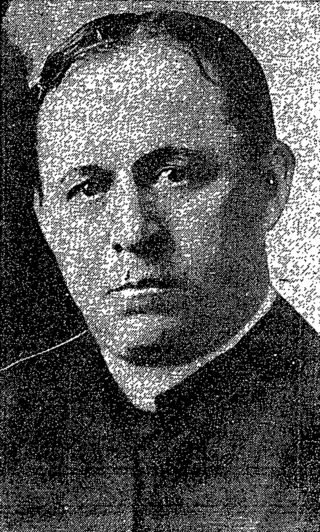
William J. Ennis was an American Catholic priest and Jesuit who was the president of Loyola College in Maryland from 1911 to 1918 and was the first vice principal of Loyola School in New York City. He entered the Society of Jesus in 1879 and during his Jesuit formation, studied at Woodstock College and taught at Georgetown University. In 1895, he became the prefect of studies at Georgetown.
